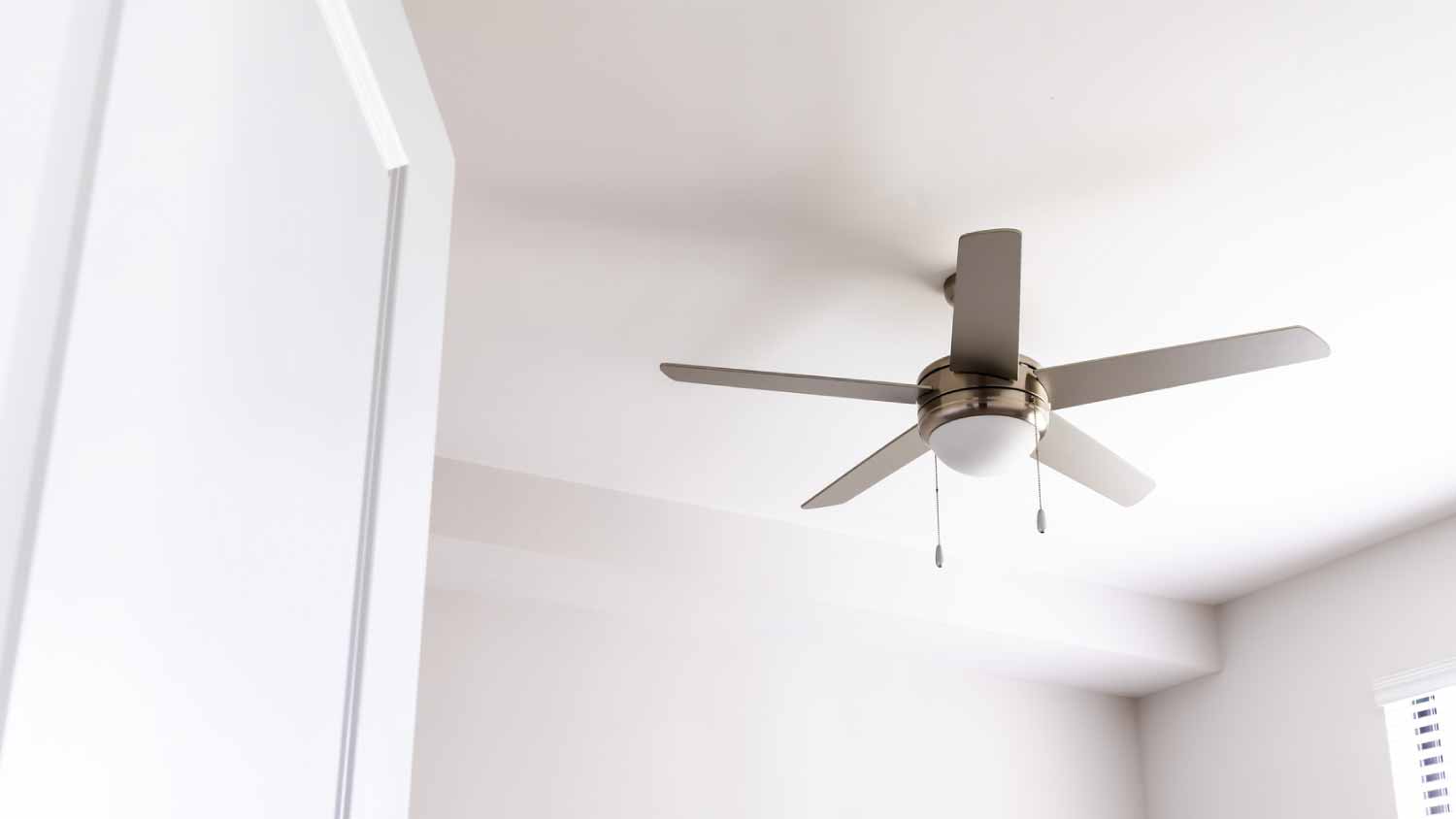What Is AC Tonnage? How to Calculate the Correct AC Tonnage for Your Unit
Knowing this HVAC term will make a ton of sense
AC tonnage refers to the amount of heat an HVAC unit can remove per hour.
You can find the tonnage of your AC unit on your model number located on your outdoor condenser.
Proper sizing (load calculation) is important for determining comfort levels and overall efficiency.
Factor in your home’s square footage, insulation, ductwork, and climate zone to determine the right AC tonnage.
On average, 1 square foot of space equals 20 BTU.
If you’ve ever needed repair work on your AC unit, you may have heard your HVAC technician throw out the phrase “AC tonnage,” only to nod your head in confusion. But understanding how AC tonnage relates to your AC unit can make all the difference in its ability to keep your home comfortable. This guide will help you understand AC tonnage so that you choose the right HVAC system for your home.
What Is AC Tonnage?
A ton in the heating and cooling field refers to an HVAC system’s ability to cool a space by removing heat. Your AC’s tonnage depends on how many British Thermal Units (BTU) your unit absorbs and removes per hour. BTU is a heat measurement based on the amount of heat needed to increase a pound of water’s temperature by 1 degree Fahrenheit.
HVAC Tonnage Calculator
Calculation based on the average square footage of a home, which is 2,273 square feet. Calculations rounded to the nearest whole number.
| Input Measurement | Result |
|---|---|
| Home region | Climate zone 3 |
| HVAC system type | Cooling and heating |
| Home square footage | 2,273 square feet |
| Recommended HVAC tonnage | 4 tons |
How to Calculate AC Tonnage

If you want to know how much AC tonnage your current unit has, check the label on your outdoor condenser unit. Depending on your manufacturer, they might list the exact tonnage, but you’ll usually only find the BTU information, which you can use to find your tonnage.
Here’s how you can find the tonnage information for most HVAC units:
Step 1: Locate your outdoor condenser unit.
Step 2: Find the product information label, usually located on the back of the unit.
Step 3: Look for the model number.
Step 4: Search for an even number between 18 and 60 within the model number sequence.
Step 5: Divide the even number by 12 (which represents 12,000 BTU per hr, or 1 ton of cooling capacity) to get your AC unit’s tonnage.
These numbers represent the BTU of your system; e.g., 18 means 18,000 BTU. Here are some examples of AC tonnage levels your HVAC may have:
18 = 1.5 tons
24 = 2 tons
30 = 2.5 tons
How Much AC Tonnage Do I Need?
Determining how much AC tonnage you need is key to getting the most out of your AC unit, but doing so isn’t necessarily as straightforward as you may think. Calculating the proper tonnage estimate requires you to consider a variety of factors, including:
The square footage of your house
Your home’s layout
The type of insulation and ventilation in the house
Your home’s ductwork
The current energy efficiency of your home
Your climate zone
Square Footage
A 1-ton HVAC system removes 12,000 British Thermal Units (BTU) of heat—or approximately 3,500 W of electricity—every hour. Most AC units range from 1 to 5 and a half tons, but how much AC tonnage your AC unit needs depends greatly on the area of your home. Roughly speaking, 1 square foot of space equals 20 BTU.
Below is a chart for reference.
| Area in Square Feet | BTU | AC Tonnage |
|---|---|---|
| 600 sq ft | 12,000 BTU | 1 ton |
| 900 sq ft | 18,000 BTU | 1.5 tons |
| 1,200 sq ft | 24,000 BTU | 2 tons |
| 1,500 sq ft | 30,000 BTU | 2.5 tons |
| 1,800 sq ft | 36,000 BTU | 3 tons |
| 2,100 sq ft | 42,000 BTU | 3.5 tons |
| 2,400 sq ft | 48,000 BTU | 4 tons |
| 2,700 sq ft | 54,000 BTU | 4.5 tons |
| 3,000 sq ft | 60,000 BTU | 5 tons |
| 3,300 sq ft | 66,000 BTU | 5.5 tons |
Home Layout
While basing your AC tonnage on the number of square feet in your home may be a quick way to come to a conclusion, your home’s layout also plays a role. The number of stories your home has and your ceiling height are two large factors to consider. Both a two-story home and a home with a high vaulted ceiling will hold onto heat in the upper level due to the stack effect.
Existing Insulation and Ventilation
A home with solid insulation and a good ventilation system throughout it will help prevent heat from entering the home, counteracting the stack effect. This feature means your AC unit won’t need to work as hard to keep the home’s interior cool. However, if your home lacks insulation, has leaks, or needs to have its insulation replaced, you might need to account for its inability to hold onto cool air by opting for an AC unit with more tonnage.
Ductwork
If you have a ducted AC unit, choosing the right-sized ducts can affect your unit’s efficiency and the AC tonnage it needs. Ducts distribute air throughout your home, so if you have too small ducts, the air won’t cool your home fast enough, causing your AC unit to stay on longer than needed.
Energy Efficiency of Your Home
For homes with poor energy efficiency, you might need to multiply your square footage by 25 BTU to account for energy loss. Consider having an energy audit to crack down on the window, door, and foundational leaks that could be causing your home’s AC unit to work harder than it should.
Climate Zone

Both your climate zone and the microclimate in your yard play roles in the AC tonnage you’ll need to keep your home comfortable. For example, your relative who lives in a cooler region can get by with less AC tonnage than someone who lives in a hot region. Likewise, your neighbor’s home might have lots of shade coverage and can get by with a smaller unit, but if your home doesn’t have any trees, you might need a unit with a higher capacity.
Why Does the Right Amount of AC Tonnage Matter?
The system's capacity must be quite close to the load demand, or your unit could struggle to cool your house efficiently. Too little AC tonnage can cause a unit to struggle to cool your home properly, make the inside of your home uncomfortable, shorten your unit’s life span, and increase your energy bills. On the other side, too much tonnage not only costs more upfront but can also cost more in HVAC maintenance.
Comfort Levels
A home with too little AC tonnage can lead to excessively dry air that makes for an uncomfortable time indoors, while a home with too much AC tonnage can cause the air in your house to feel thick and stuffy. This issue can prevent the system from removing enough humidity, making a damp home susceptible to mold.
Better Efficiency and Longer Life Span
An undersized unit will constantly run, which can shorten the equipment's life span since it runs so much of the time. However, an oversized unit will tend to short-cycle, meaning the unit turns on and off before adequately or evenly cooling your home. An oversized system that short-cycles will cause your unit to work harder than intended to keep you cool. In some cases, it can also cause high levels of humidity and mold growth in your home, leading to expensive AC repairs or frequent AC servicing.
Cost
While some home appliances such as microwaves and refrigerators are worth the extra cost, bigger is not better for your HVAC system. A 2-ton AC unit costs approximately $2,250, while a 5-ton AC unit costs around $5,500 on average, so choosing an oversized unit could mean the difference between thousands of dollars.
As mentioned above, an oversized AC unit can do more harm than good, but you could also overpay for an undersized unit that kicks the bucket prematurely from overuse. If you’re unsure of the right-sized AC tonnage you need for your home, speak with an HVAC contractor near you to avoid turning your AC investment unit into a money pit.
Sara Coleman contributed to this article.
Frequently Asked Questions
BTUs, or British Thermal Units, measure the amount of heat needed to increase a pound of water’s temperature by 1 degree Fahrenheit. In HVAC, tonnage refers to a system’s ability to cool a space by removing heat, and it is dependent on how many BTUs your unit absorbs and removes per hour.
12,000 BTU per hour is equivalent to 1 ton of capacity. For comparison’s sake, a typical residential heat pump ranges between 1 to 5 tons. Knowing the base number of how many BTUs equal a ton can help if you need to calculate the correct tonnage of an AC unit or determine the right sized unit for your home.





- Furnace Repair
- Air Conditioning Repair
- HVAC Repairs
- Furnace Installation
- Wood & Pellet Stove Repair
- Dehumidifier & Humidifier Repair
- Heat Pump Companies
- Swamp Cooler Repair
- Wood Stove Services
- HVAC Companies
- Commercial A/C Repair
- Geothermal Installation
- Air Conditioning Installation
- Boiler Repair
- 24 Hour Furnace Repair
- Geothermal Repair
- Heat Pump Repair
- Humidifier Installation
- Thermostat Repair
- Thermostat Installation
- Nest Installation
- Heating & Cooling
- Heating Repair
- Furnace Cleaning
- Furnace Tune-Up
- HVAC Technicians
- Subcontractors
- Furnace Maintenance
- Plumbing & Heating Companies
- Wood Stove Inspection
- Mini Split Installation
- Wall Heater Repair
- Duct Installers
- What Size AC Unit Do I Need for My Home?
- How Long Do AC Units Last? Here’s the Average Life Span
- Should You Cover Your Air Conditioner in the Winter? Everything to Know
- Here’s Who to Hire to Clean and Repair a Window AC Unit
- Is It Bad to Keep Turning Your AC On and Off?
- Why Is the Outside AC Unit Not Turning On, But the Inside Is? 9 Common Reasons
- Who Can Install a Window AC Unit? Your Hiring Guide for AC Installation
- How to Pick the Right Window Air Conditioner Size for Your Home
- If You’ve Lost Your Cool, Here’s Who to Call to Fix the AC
- 7 Common Reasons Why Your AC Stopped Working (and How to Fix It)










